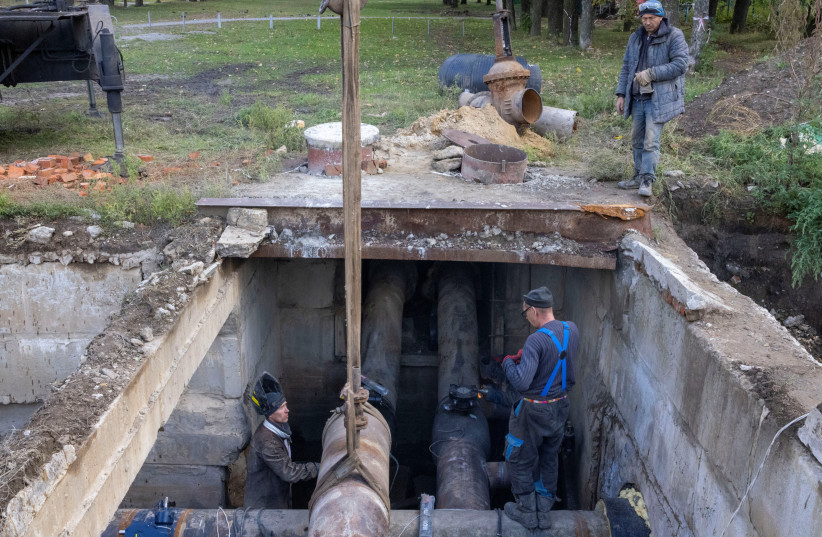As the weather has turned colder, Russia has begun aggressively targeting Ukrainian power stations in an effort to deteriorate civilian living conditions and cause extra harm in the winter, according to Ukrainian and Western officials.
The British Ministry of Defence Intelligence update on Monday pointed out that, in addition to temperature and weather shifts, changes to daylight hours will impact decisions made on both sides of the Russia-Ukraine war. Daylight will reduce drastically, the update explained, which will mean fewer offensives and more static defensive frontlines. Lack of night vision capability will likely reduce willingness to clash at night.
There are also severe, concrete concerns that come with cold weather such as the shortening of the "golden hour" window in which a critically wounded soldier is able to be given effective, life-saving medical treatment.
✅ 12,000 sleeping kits✅ 7000 normal cold weather kits✅ 150 heated tents✅ 25,000 extreme cold weather kits by mid-DecemberAfter training with the @BritishArmy - Ukrainian recruits return with cold weather kits to prepare for the cold Winter ahead.#WeStandWithUkraine pic.twitter.com/DEbL7bKguj
— Ministry of Defence (@DefenceHQ) November 12, 2022
Britain is not standing idly by as the Ministry of Defence gathers intelligence; a Nov. 12 Twitter post by the Ministry of Defence detailed all of the cold-weather gear that the UK is equipping Ukrain with: 12,000 sleeping kits, 7000 normal cold weather kits, 150 heated tents and 25,000 extreme cold weather kits by mid-December.
Russia's withdrawal from Kherson
The New York Times reported on Nov. 12 - the day after the Russian withdrawal from Kherson was announced- that the rain and soft ground this time of year will slow both Russian and Ukrainian troop movements. US officials believe that Moscow's decision to pull out of Kherson was influenced by concerns that soldiers would be trapped in hostile territory with no supplies once the winter set in, according to the Times.
“You’re already seeing the sloppy weather in Ukraine slow things down a little bit,” Colin H. Kahl, the under-secretary of defense for policy, told the Times earlier this month. “It’s getting really muddy, which makes it hard to do large-scale offensives.”
Using winter as a weapon
"Russian attacks on infrastructure were planned weeks in advance. The Kremlin uses winter as a weapon, trying to demoralize people who remain strong despite all the brutality inflicted on them by the occupiers," said the head of Ukraine's military intelligence, Major General Kyrylo Budanov, in a comment to British news outlet The i in late October.
About 10 million people are without power, President Volodymyr Zelensky said in a Thursday evening video address, in a country with a pre-war population of about 44 million. He said authorities in some areas ordered forced emergency blackouts.
The US ambassador to Kyiv, Bridget Brink, tweeted on Thursday: "Even as Ukraine sends grain to those who need it, Russia targets civilian infrastructure with more strikes across Ukraine, trying to leave millions in the cold and dark."
Ukraine's weather forecast: A possible saving grace
Winters can be long and hard in Ukraine, but the state-run weather forecasting center predicted in mid-October that temperatures may be slightly higher than average this winter.
"The average temperature of the winter period is expected to be 1-2 degrees (Celsius) higher than the norm... the probability of long periods of very cold weather with a minimum temperature of minus 25-30 Celsius degrees in Ukraine is very low," it said in an Oct. 20 Facebook post.
"Mostly probable short-term significant cooling lasting 1-5 days, when the minimum temperature at night will be minus 15-20 Celsius degrees," it said.
Reuters contributed to this report.

